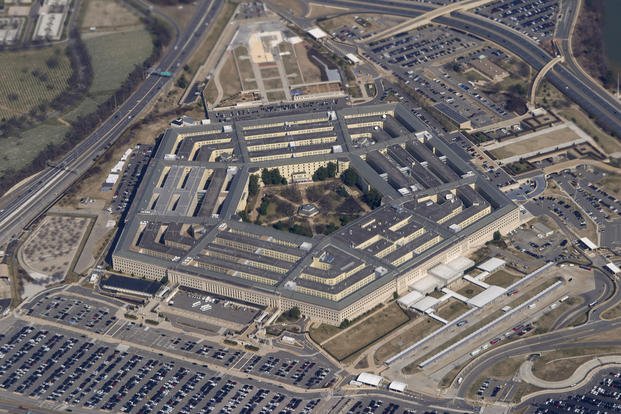
WASHINGTON — The new Sentinel nuclear warhead program is 81% over budget and is now estimated to cost nearly $141 billion, but the Pentagon is moving forward with the program, saying that given the threats from China and Russia it does not have a choice.
The Northrop Grumman Sentinel[1] program is the first major upgrade to the ground-based component of the nuclear triad in more than 60 years and will replace the aging[2] Minuteman III intercontinental ballistic missile.
It involves not only building a new missile but the modernization of 450 silos across five states, their launch control centers, three nuclear missile bases and several other testing facilities.
The expansiveness of the program previously raised questions from government watchdogs as to whether the Pentagon could manage it all.
Military budget officials on Monday said when they set the program's estimated costs their full knowledge of the modernization needed “was insufficient in hindsight to have a high-quality cost estimate,” Bill LaPlante, under secretary of defense for acquisition and sustainment, told reporters on a call.
The high cost overrun triggered what is known as a Nunn-McCurdy breach, which occurs if the cost of developing a new program increases by 25% or more. By statute, the under secretary of defense for acquisition then must undertake a rigorous review of the program to determine if it should continue; otherwise the program must be terminated.
“We fully appreciate the magnitude of the costs, but we also understand the risks of not modernizing our nuclear forces and not addressing the very real threats we confront,” LaPlante said.
The Nunn-McCurdy review determined that the majority of the cost growth is in Sentinel’s command-and-launch segment, which includes the extensive communications and control infrastructure that allows missile launch officers, who serve on alert 24 hours or more in underground launch centers, to connect to the silo-based missiles and fire them if ordered.
The program will be restructured, La Plante said. Some of the modernization that was planned for the launch facilities will be scaled back and some of the ambitious replacement of a whole network of underground cabling known as Hicks cables may be revised in favor of some more affordable alternatives.
The increased cost will also eventually be offset by cuts to other programs, said Gen. Jim Slife, Air Force vice chief of staff. However, the Air Force assesses that the majority of the cost increases to the Sentinel program will take place outside of the next five fiscal years of budget planning, meaning no difficult choices on program cuts will need to be made immediately.
© Copyright 2024 Associated Press. All rights reserved. This material may not be published, broadcast, rewritten or redistributed.
 When a comrade falls in war, you do what you can to help them. That's a mantra Marine Corps Pfc. Harold Christ Agerholm took seriously during the World War II Battle of Saipan when he helped evacuate nearly two-dozen wounded men during a large enemy
When a comrade falls in war, you do what you can to help them. That's a mantra Marine Corps Pfc. Harold Christ Agerholm took seriously during the World War II Battle of Saipan when he helped evacuate nearly two-dozen wounded men during a large enemy
 Sports Heroes Who Served is a series that highlights the accomplishments of athletes who served in the U.S. military.
Rocky Bleier was a National Football League halfback for the Pittsburgh Steelers in 1968 and 1970-1980, playing in four Super Bowl
Sports Heroes Who Served is a series that highlights the accomplishments of athletes who served in the U.S. military.
Rocky Bleier was a National Football League halfback for the Pittsburgh Steelers in 1968 and 1970-1980, playing in four Super Bowl